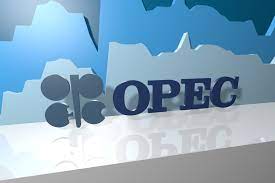As the global oil market eagerly anticipates the upcoming OPEC(+) production decision—a potential shift in the current production cut strategy—most eyes are on Saudi Arabia or Aramco leaders. However, there’s a new player in town, already hinting at a dramatic strategy change without OPEC’s approval.
Sources in Abu Dhabi suggest the Emirate is no longer convinced of the necessity of OPEC+ production cuts, given the current volatile oil markets and increased demand. Simultaneously, ADNOC sources indicate an imminent production increase. Insiders reveal that ADNOC is considering raising production to around 4.85-4.87 million bpd, breaking from the current OPEC strategy. This move isn’t surprising, as ADNOC has heavily invested in production capacity expansion, constrained until now by its commitment to OPEC decisions.
With a total production capacity currently set at 4.5 million bpd (official sources), but expected to rise—possibly hitting 5 million bpd soon—a production target of 4.85 million bpd in May-June 2024 is aggressive but feasible. ADNOC, or the UAE, clearly sees the need for these unilateral production increases. They are positioning themselves as a major International National Oil Company (INOC), aiming to compete with the Seven Sisters. Sultan Al Jaber, ADNOC’s CEO, understands the need for change, with plans to acquire assets upstream and downstream.
Despite potential fallout from a unilateral Abu Dhabi decision within OPEC, significant players in the international oil market may take a laissez-faire approach. The IMF underscores the need for higher volumes and revenues in the MENA region. Saudi Arabia, in particular, requires much higher oil prices to counter its government budget requirements. The IMF indicates that Saudi Arabia will need to have an oil price of around $96.30 per barrel to counter its government budget requirements. This assessment is based on current crude oil production of around 9.3 million bpd. In its regional Outlook, the IMF stated that the current break-even price is around 21% higher than shown in its former forecast in October 2023, when Saudi Arabia was still producing around 10 million bpd. The new break-even price is also way above the global oil price at present for Brent, currently hovering around $90 per barrel.
Abu Dhabi aims to monetize its investments, continuing its acquisition spree in upstream and downstream oil & gas with an increased budget if production cuts are eased in June.
All signs point to a push for an OPEC strategy change, especially from Abu Dhabi. Market players should closely monitor signs from the Emirates, as Riyadh may not be able to steer its course!

 Iran Energy News Oil, Gas, Petrochemical and Energy Field Specialized Channel
Iran Energy News Oil, Gas, Petrochemical and Energy Field Specialized Channel



